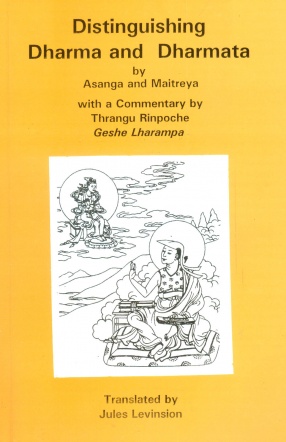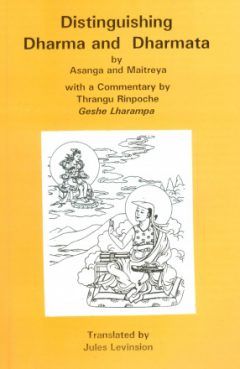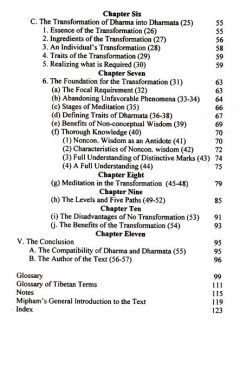Asanga in the fourth century mediated on Maitreya for twelve years and then was able to meet the Maitreya Buddha (the nest Buddha) directly, who gave him five works including this text. Asanga then went on to found the Mind-only or Chittamatra school of Buddhism. This text, which contains both the root verses of Maitreya and a commentary on these verses by Thrangu Rinpoche, begins by giving the characteristics of dharma which is ordinary phenomena as we perceive it as unenlightened beings. Phenomena is described in detail by giving its characteristics, its constituents or elements, and finally its source which is the mind. Discussed are the eight consciousnesses especially the alaya consciousness and how it creates the appearance of this world. Understanding dharma allows us to understand how we build up a false illusion of this world and this then leads to our problems in samsara. Next, the text discusses dharmata or phenomena as it really is, not as it appears, in detail. In describing this sphere of reality or pure being, the text gives the characteristics of dharmata, where it is located, and the kinds of meditation needed to develop a perception of the true nature of reality. Finally, there is a discussion of how one transforms ordinary dharma into dharmata, i.e., how one reaches awakening or enlightenment. This is discussed in ten famous points and this is actually a guide or a map to how to proceed along the Buddhist path. This text has been extensively studied in Tibet, particularly among the Kagyu and Nyingma traditions. Now the student can read this profound work and a clear commentary on it by a world-renowned scholar who has been studying and also putting this text into practice for the last half century.
Distinguishing Dharma and Dharmata by Asanga and Maitreya
In stock
Free & Quick Delivery Worldwide
reviews
Bibliographic information
Title
Distinguishing Dharma and Dharmata by Asanga and Maitreya
Author
Edition
1st ed.
Publisher
ISBN
8170307163
Length
vi+120p., Notes; Appendix; Glossary; Index; 22cm.
Subjects








There are no reviews yet.